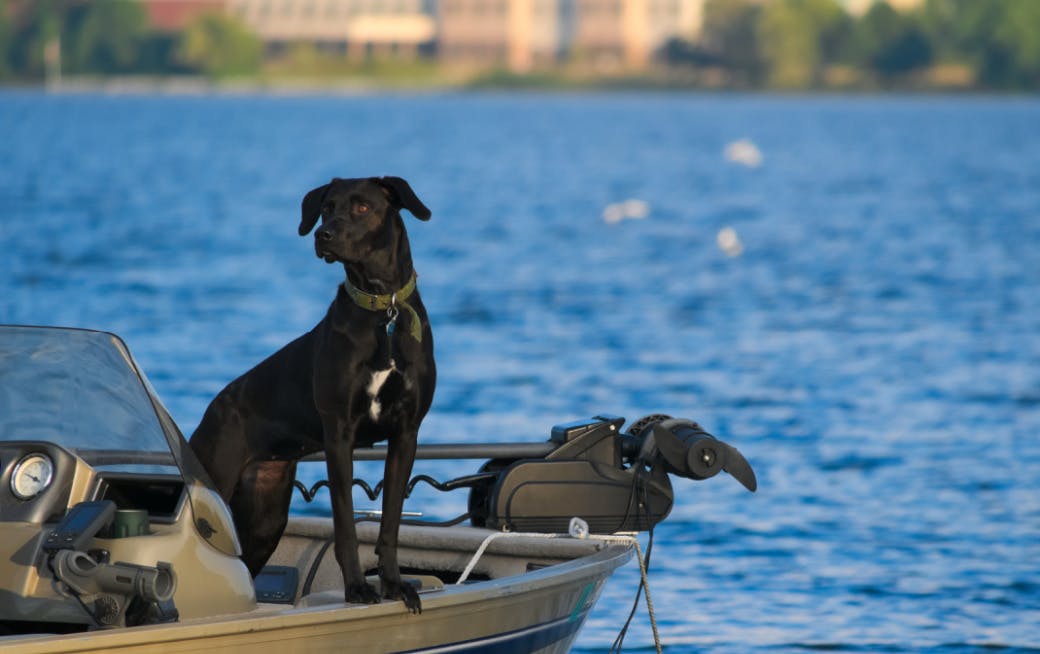How to Keep Your Kids Safe at the Playground this Summer
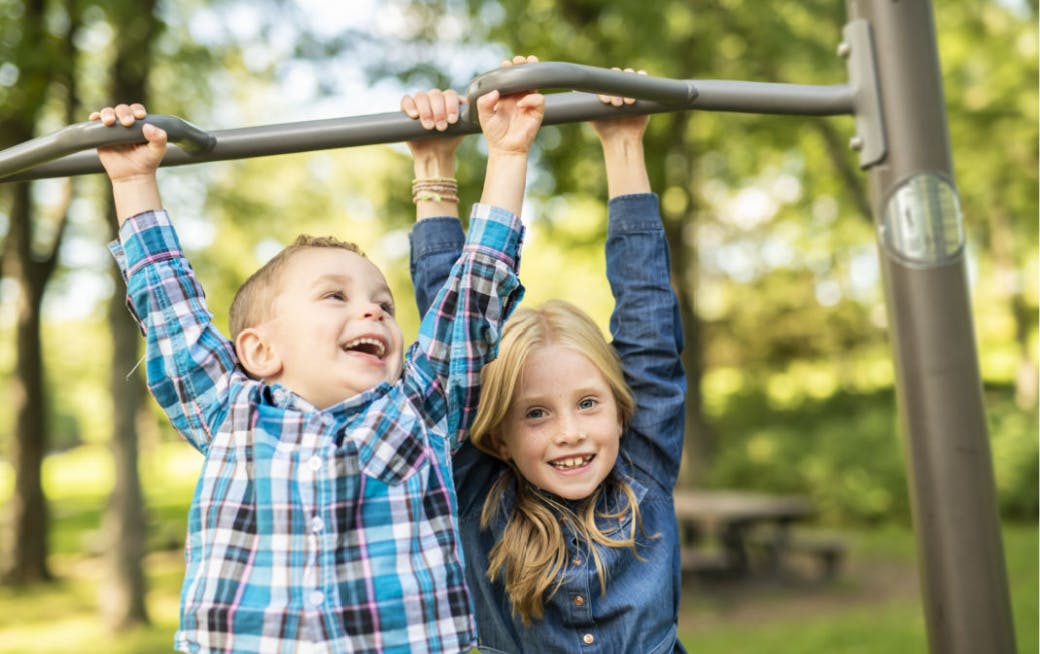
Every kid loves a trip to the playground. Why wouldn't they? Playgrounds are a great place for children to get fresh air and exercise, not to mention have some good old-fashioned fun with their friends.
But while that fun is the primary concern of the child, as a parent, you have to keep an eye on safety, too. Playgrounds aren't risk-free, after all. According to the Centers for Disease Control and Prevention (CDC), every year, emergency physicians treat 200,000 children with playground-related injuries, with 75% of those injuries occurring on public playgrounds.
That’s no reason to skip the playground, though. It just means you'll want to take some extra precautions.
Here are some tips to help keep your kids safe on the playground this summer.
1. Inspect the playground yourself.
A lot of common playground injuries can be avoided just by checking the equipment yourself before letting your child loose to have a blast. It’s a good idea to ask if the playground is inspected regularly and maintained by qualified personnel, but don’t just take someone else’s word and leave it at that. If your child is going to be playing there, you want to know for certain that there aren't any unnecessary dangers.
Take a thorough look at the swings, slides, merry-go-rounds, climbing structures, or anything else your child might play on. Ask yourself questions like:
- Is everything anchored firmly in place?
- Are all the S-hooks closed to form a solid figure 8?
- Are bolts and screws flush, or are they sticking out and in danger of snagging or tripping someone?
- Is there rust on metal surfaces?
- Are there splinters anywhere?
- Do any parts of the equipment appear to be missing?
You don’t have to go over everything with a magnifying glass, but a quick sweep of the playground should give you a good idea of whether or not the playground poses excessive risks for frolicking kiddos.
2. Check the playground’s surfacing.
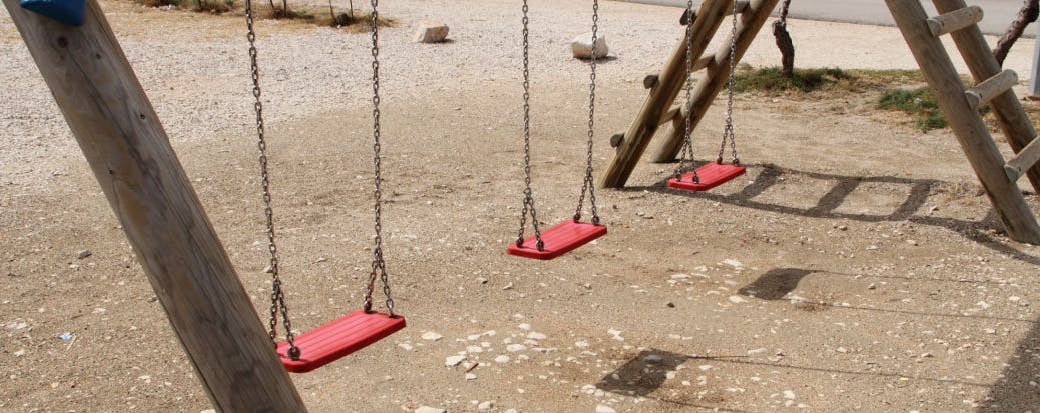
Of course, you want to minimize the chances of your child falling at all. But if your child does fall, you'll want to know that proper surfacing material has been installed under and around the equipment.
Safe surfaces fall into two categories: unitary or loose-fill. Recommended unitary surfacing materials include:
- Poured-in-place rubber
- Rubber mats
- Rubber tiles
- Synthetic turf
Recommended loose-fill surfacing materials include:
- Certified wood products such as bark mulch and wood chips
- Rubber mulch
- Sand
- Pea gravel
…However, unitary surfaces are almost always a safer bet.
As for the playground surfacing materials to steer clear of?
- Concrete
- Asphalt
- Grass
- Blacktop
- Packed dirt
These just do not provide sufficient cushion or stability to protect a child.
If you want to know more about how to pick the right surfacing material, you can find good advice in the Consumer Product Safety Commission Public Playground Safety Handbook (CPSC).
3. Dress your child for safety.
What your child wears to the playground can be an important part of keeping their playtime as danger-free as possible. Avoid anything that could get caught on equipment or wrapped around the child’s neck.
Make sure your child isn’t wearing any:
- Purses
- Clothing with drawstrings or straps
- Water bottles
- Scarves
- Necklaces
- Jewelry
- Bike helmets
Yes, even helmets can be dangerous on the playground. Save those for when they’re riding a bike or skateboarding.
4. Avoid Ropes
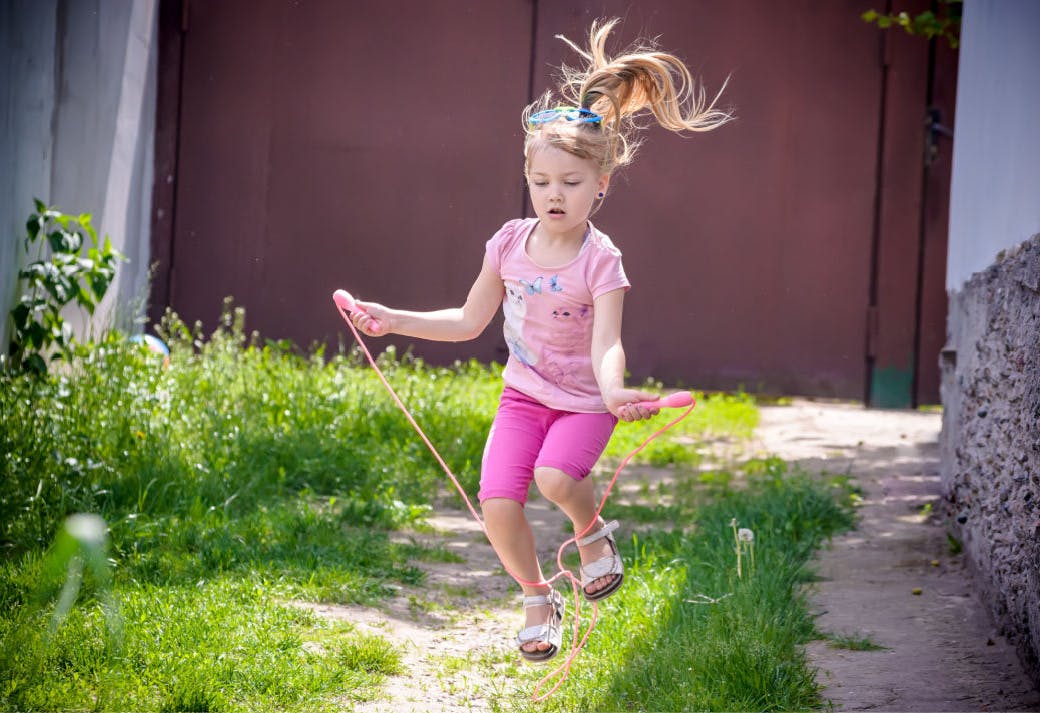
Many of us have fond memories of playing on and around ropes as kids. Rope swings, rope ladders, rope bridges—they can all be a ton of fun. Unfortunately, they can also be a real safety hazard.
Ropes often look stronger than they really are, making a fall all the more likely. Factor in the risks of a child getting tangled or trapped, and the risks increase.
The United States Consumer Product Safety Commission suggests:
“Never attach ropes, jump ropes, pet leashes, or strings to playground equipment.”
If the playground you're looking at hasn't taken that advice, you might want to find someplace else for your child to play.
5. Make sure children are only playing on age-appropriate equipment.
Though it might seem like the playground is a one-size-fits-all kind of place, the truth is that age and development can have a major impact on what equipment is safe for a given child and what isn’t.
Playgrounds should be designed for different age groups, usually:.
- Infants and toddlers under 2
- Ages 2-5
- Ages 5-12.
You know your child better than anyone. Choose the right playground equipment for your child’s age and skills, then teach them how to use it safely.
6. Pay attention to the weather.
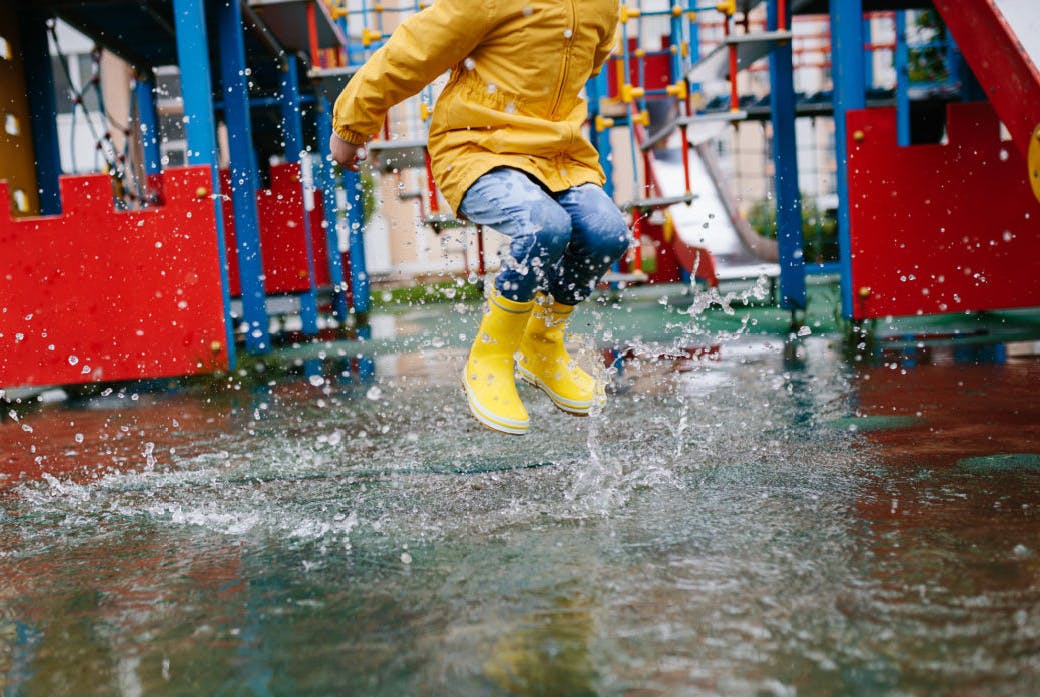
Kids spend the most time at the playground in summer, and that usually means the sun is out. Make sure that there isn’t any overly hot metal that could burn a child. (Metal slides are notorious for this.)
Rain can also pose a threat. Don’t let your kids play on wet equipment, as it greatly increases the chances of slipping and falling.
7. Talk to your child about safety, then make sure they're supervised.
Go over playground rules and etiquette with your child. Teach them to:
- Not push or shove
- Take turns
- Share
- Not throw dirt, wood chips, rocks, or sand
- Be aware of their surroundings so that they don’t get kicked or pushed accidentally
- Never leave the area with anyone other than you or an adult you trust
Then, make sure that whoever is supervising the child keeps both eyes open to make sure they’re having fun as safely as possible. The guardian needs to know where they are, what they’re doing, and who they’re with at all times.
8. Make sure there’s a first-aid kit handy.
No matter how many precautions you take, injuries can still happen on the playground. Being prepared can make a big difference in how serious things become.
Create a first-aid kit specifically designed for playground visits. You’ll want to include:
- Wet wipes
- Band-Aids
- Antibiotic ointment or cream
- Topical cream (for bug bites or strings)
- Ibuprofen
- Gauze & scissors
- Tweezers (for removing splinters and stingers)
Sunscreen and insect repellent may also come in handy..
Let the fun begin!
These tips will help keep kids out of harm’s way and on track for a safe, happy, healthy childhood.
However, things can still go wrong. If you have a child who was injured on a playground—whether under your personal care or someone else’s—you may be entitled to compensation. Throughout our 60-plus years as Minnesota’s original “Know Your Rights” attorneys, we’ve helped numerous parents deal with the legal ramifications of a child injury.


